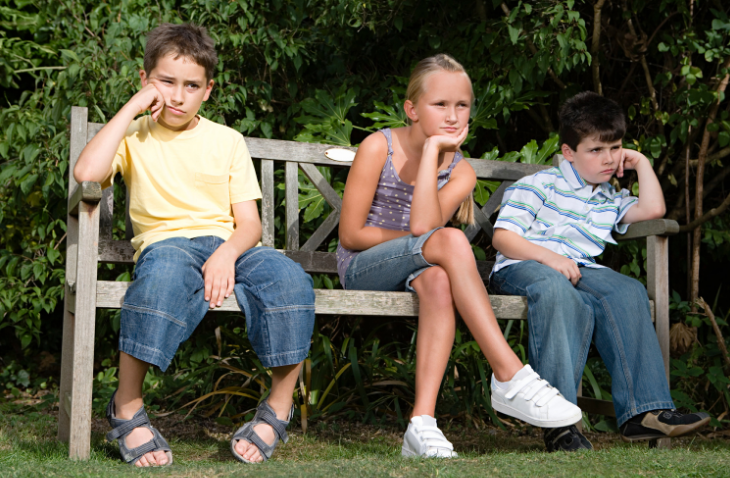Our children are our future. The world will soon be in their hands. Show them the importance of caring for their environment, recycling, and appreciating the luxuries of everyday life with these green activities.
1. Make a compost pile. A compost pile is a way for kids to watch nature recycle itself in action! Natural waste, such as grass clippings and table scraps, is slowly broken down to make new soil that many farmers and gardeners consider the golden ticket to a thriving crop. Did you know about 30% of the waste in landfills across the country is yard and food waste that could be used for composting? According to the Clean Air Council, the average American generates about 4.5 pounds of trash every single day—that’s over 1600 pounds per year! If every person turned their natural waste into compost, it would eliminate almost 500 pounds of garbage from going to the landfill! This project will encourage your kids to think twice about wasting their sandwich crusts or uneaten vegetables. Follow these step-by-step instructions on how to turn your trash into treasure.
2. Start a worm farm. Not only are worms fun to watch squiggle and wiggle about, but I bet your kids didn’t know what a huge role they play in the environment. Worms are basically nature’s way of recycling. They munch on dead leaves and grass clippings and create pathways in the soil for plants to grow and breathe. Making a worm farm is fairly easy and low maintenance; they are just about the easiest pet to have. When you’re finished with the worm farm, you can set them free in a garden or compost area and watch them thrive in their natural environment! A worm farm is a great way to teach the responsibility of being in charge of another living thing—practice for a future pet perhaps? Follow these simple instructions.
3. Plant a garden. Kids are more willing to eat their vegetables if they’ve seen where they come from and put forth the effort into tending to them. Have your kids to pick out plants or seeds of fruits and vegetables the like, and encourage them to pick out something they’ve never tried before like zucchini or sugar snap peas. Kids will see the watch magical process of how food is grown and how much work goes into it!
4. Recycled arts & crafts. From toilet paper tube teddies to broken button bottle banks, just about everything old can be made into something new. All you’ll need is some clean recyclable waste—such as Kleenex boxes, paper towel rolls, empty soda bottles, or plastic cutlery—and some craft supplies like glue, string, ribbon, etc. Turn empty baby food jars into memory jars, brown paper bags into puppets, and old tin cans into wind chimes. Find a list of great recycled crafts at favecrafts.com. Once your crafts have run their course, snap a digital picture of them and place them back into the recycling bin to keep the use cycle in motion.
5. Make recycled paper. A great project to show kids how much effort goes into making a single piece of paper. Perhaps they’ll think before wasting too many sheets next time! All it takes is some old newspaper, water, and a few other supplies to make a brand new sheet of paper from old newspaper. Kids will need the supervision of an adult for this project as it requires the use of a blender. Follow the instructions at childrenoftheearth.org.
6. Make reusable grocery bags. It’s a widely known fact that most plastic grocery bags end up right in the trash; only a small amount are actually recycled. Paper bags aren’t much better and use even more energy to create and transport than plastic ones. Teach your child how something seemingly small can make a world of difference. You’ll need a sewing machine for this project as hand stitching won’t quite hold up to the weight of the groceries. Gather a few pillow cases and as much “old” fabric as you can. All you’ll need is a couple of straps to stitch on and you’ve got yourself a bag! Kids can decorate their reusable grocery bags with pieces of fabric or use fabric markers to personalize them.
7. Create a backyard habitat for neighborhood animals. With expansion and construction on the rise, many animals’ habitats are being threatened or eliminated. Have you child help you create a welcoming environment for local wildlife and enjoy the views of butterflies, birds, and small mammals. Set up a bird bath to attract a variety of local birds, plant local flowers and trees, and set out a few bird and bat houses and the will find its way! Kids will love watching the joyful wildlife enjoying the gifts they’ve provided them!
8. Go for a nature hike. A growing number of kids spend most of their time indoors, and many don’t even make it a point to go outside every day. Encourage your kids to explore the wide world around them and appreciate all the beauty that nature has to offer! Visit a nature preserve in your area and take a long walk. What colors, animals, and plants do they see that they don’t see at home?
9. (Almost) zero carbon footprint day. Pick one day to be the greenest family on the block! When children see their parents setting an example and getting involved in a cause they are more likely want to get involved themselves. Spend the day biking to the grocery store, shutting all lights off before leaving the room, and conserving as much water as possible. Kids will learn to appreciate everyday luxuries that are often taken for granted.
10. Make a milk carton bird feeder. Your kids will enjoy watching the local birds flock to their backyard and enjoy a tasty treat! Cut a hole in the side of the carton big enough for birds to come and go about 2 to 4 inches from the bottom of the carton. Cut a small hole below to add a dowel rod below the hole for birds to perch. Cut 2 holes in the top of the carton and thread twine through to hang from a tree. Finally, using a pin, poke several holes in the bottom of the carton to promote moisture drainage as soggy bird feeders can cause illnesses in birds. Fill with a wild bird feed and watch the birds flock to your snack station.
Sarah Antrim



























